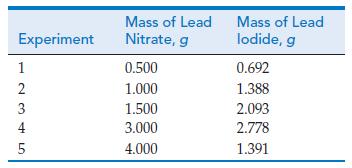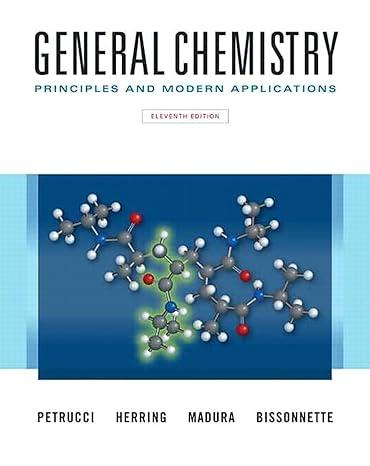Lead nitrate and potassium iodide react in aqueous solution to form a yellow precipitate of lead iodide.
Question:
Lead nitrate and potassium iodide react in aqueous solution to form a yellow precipitate of lead iodide. In one series of experiments, the masses of the two reactants were varied, but the total mass of the two was held constant at 5.000 g. The lead iodide formed was filtered from solution, washed, dried, and weighed. The table gives data for a series of reactions.
(a) Plot the data in a graph of mass of lead iodide versus mass of lead nitrate, and draw the appropriate curve(s) connecting the data points. What is the maximum mass of precipitate that can be obtained?
(b) Explain why the maximum mass of precipitate is obtained when the reactants are in their stoichiometric proportions. What are these stoichiometric proportions expressed as a mass ratio, and as a mole ratio?
(c) Show how the stoichiometric proportions determined in part (b) are related to the balanced equation for the reaction.
Step by Step Answer:

General Chemistry Principles And Modern Applications
ISBN: 9780132931281
11th Edition
Authors: Ralph Petrucci, Jeffry Madura, F. Herring, Carey Bissonnette




